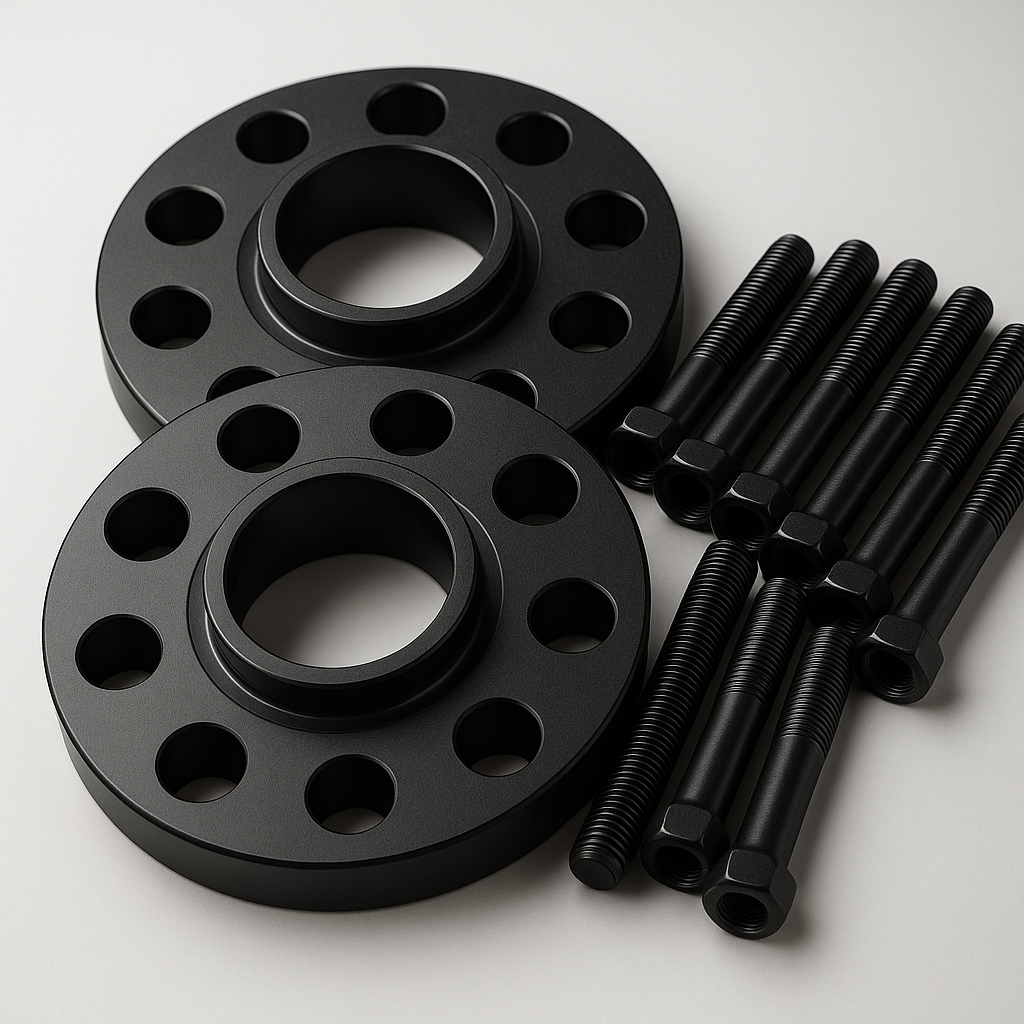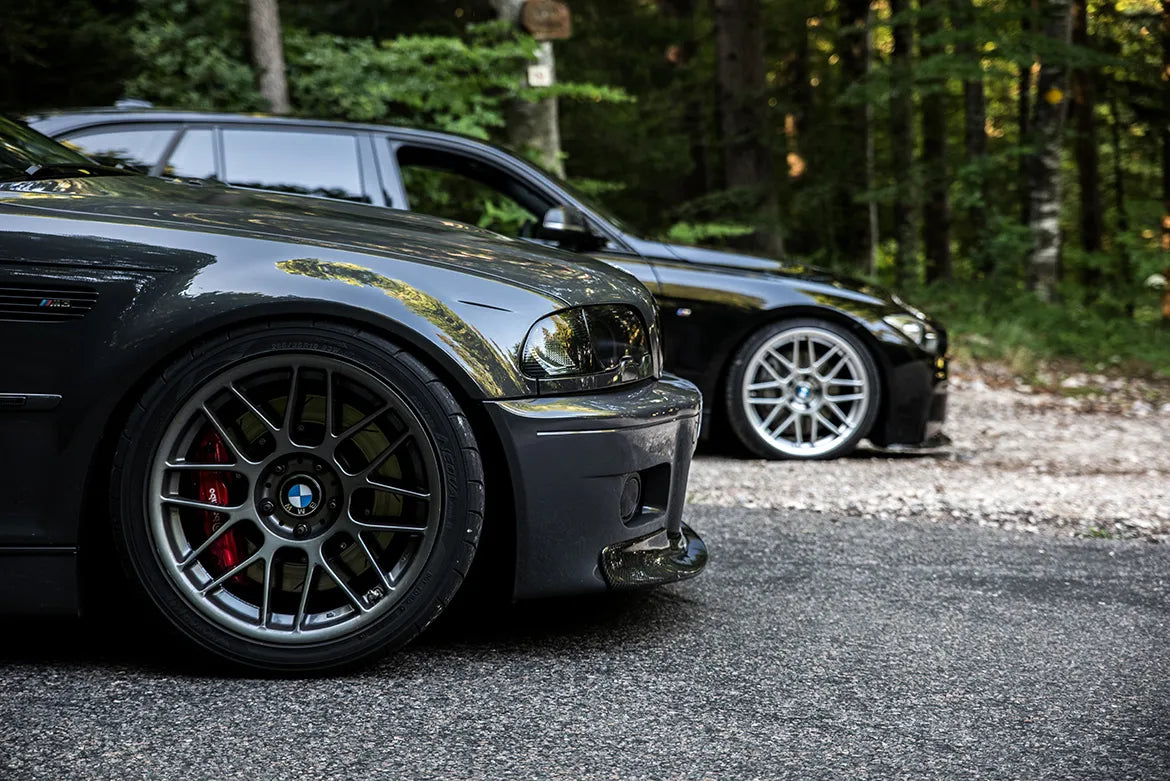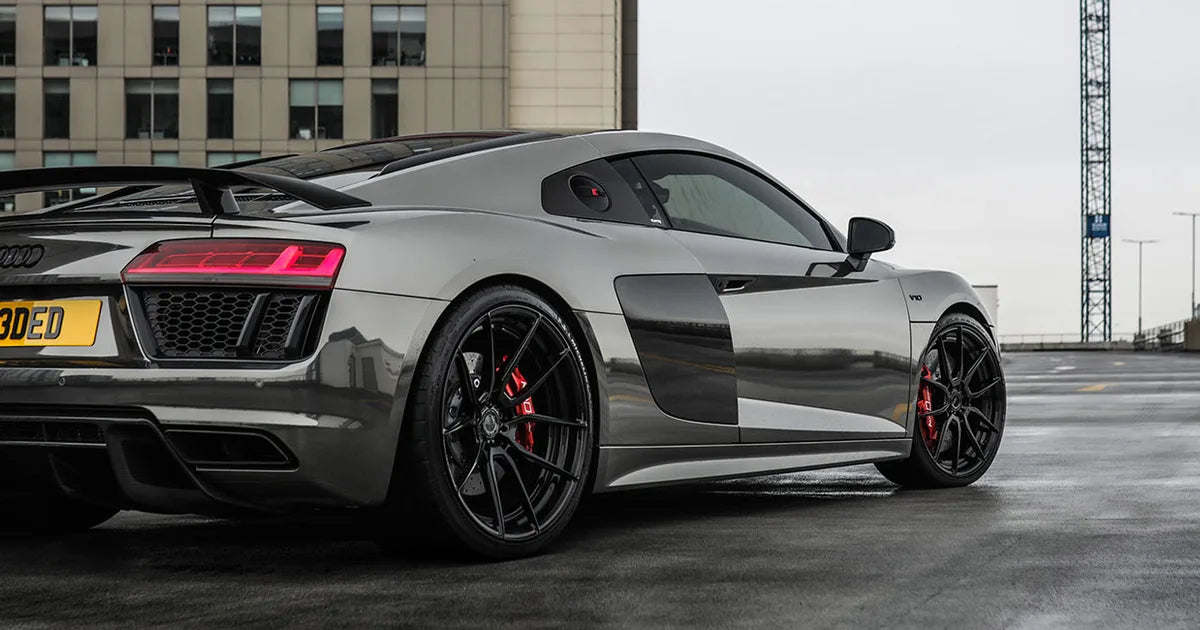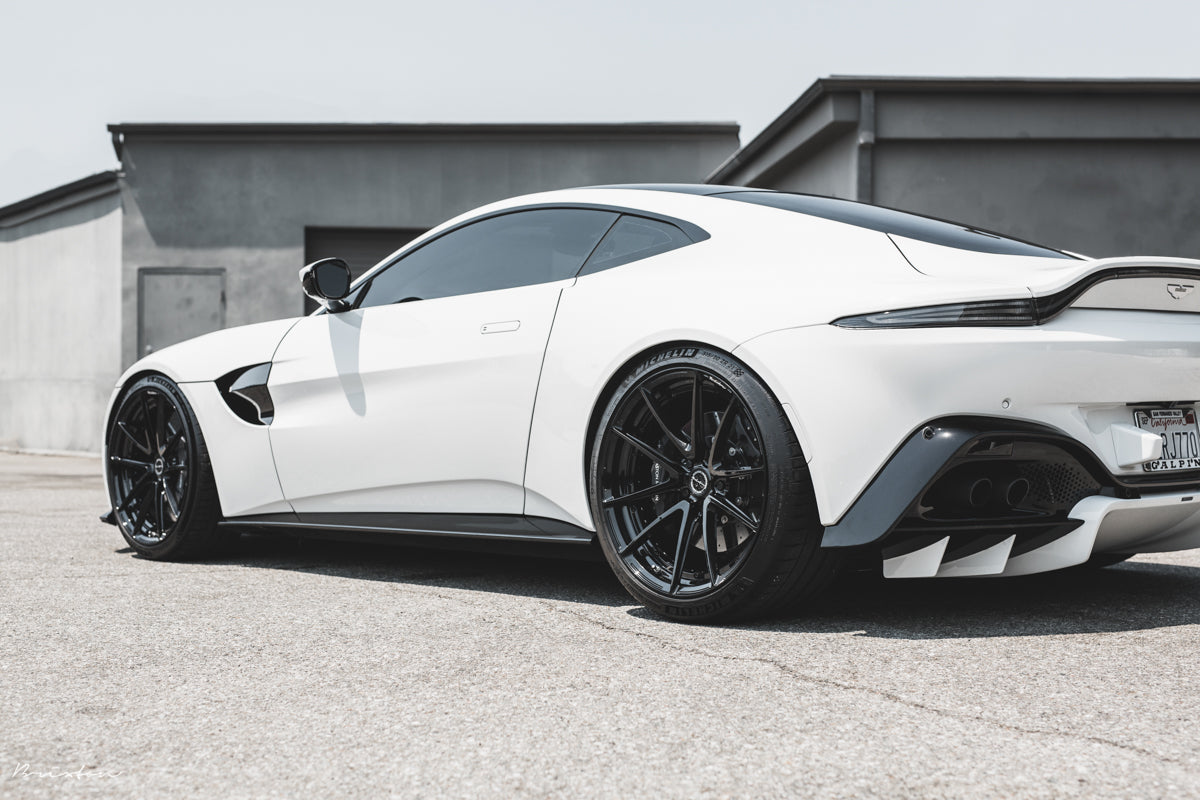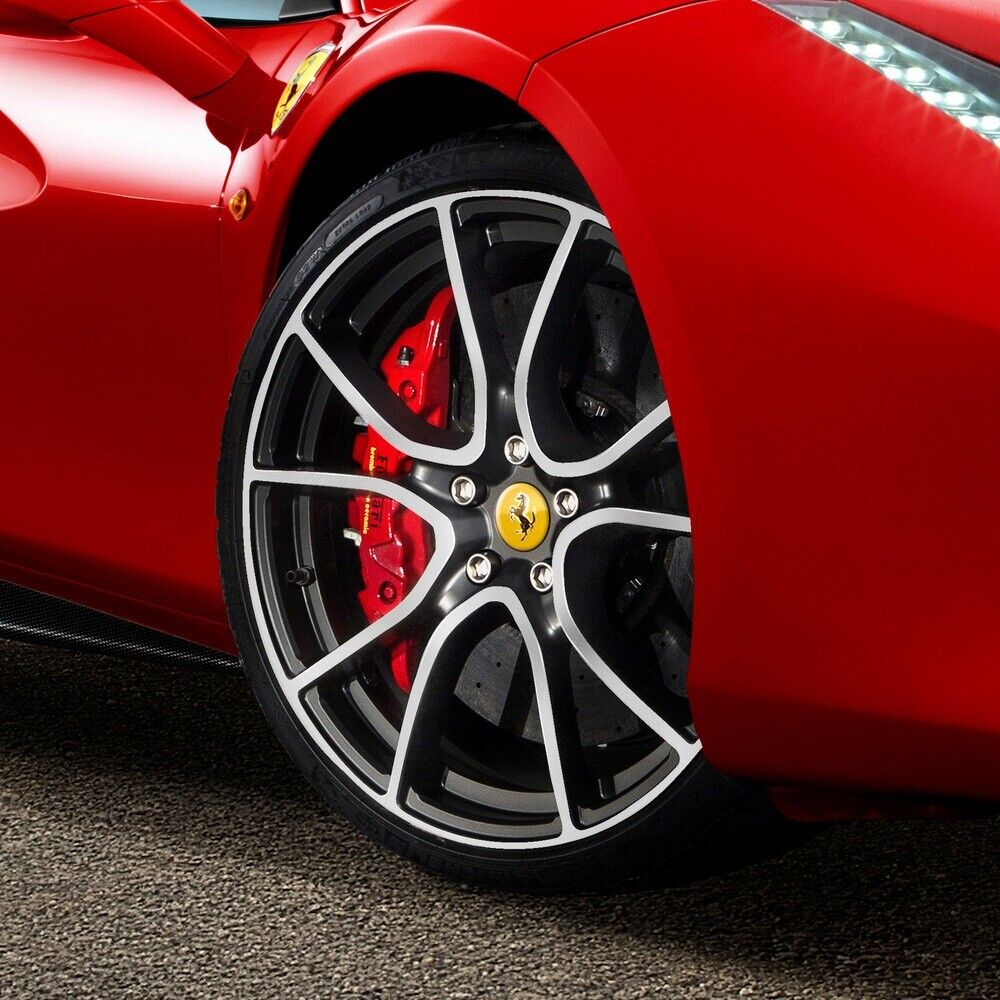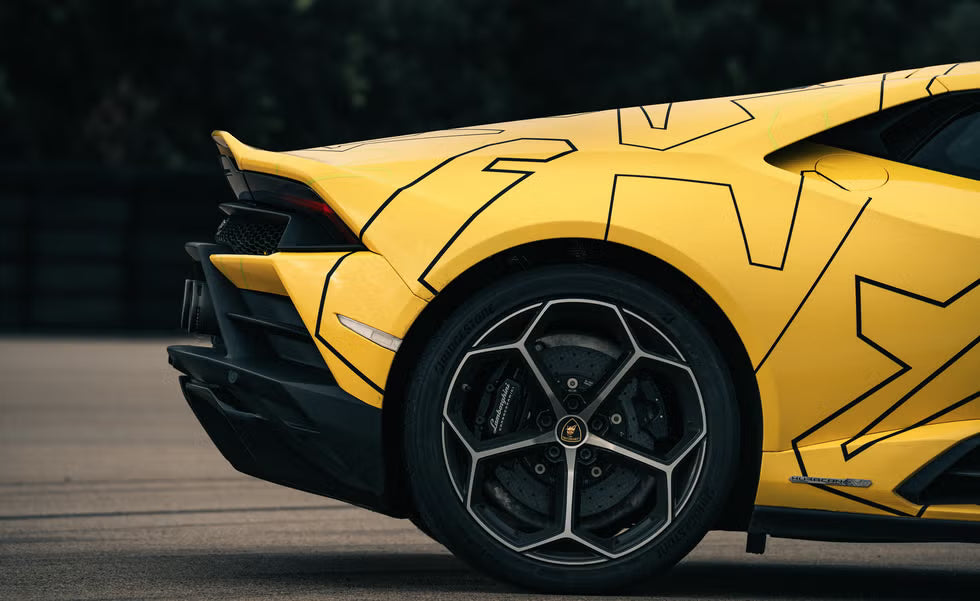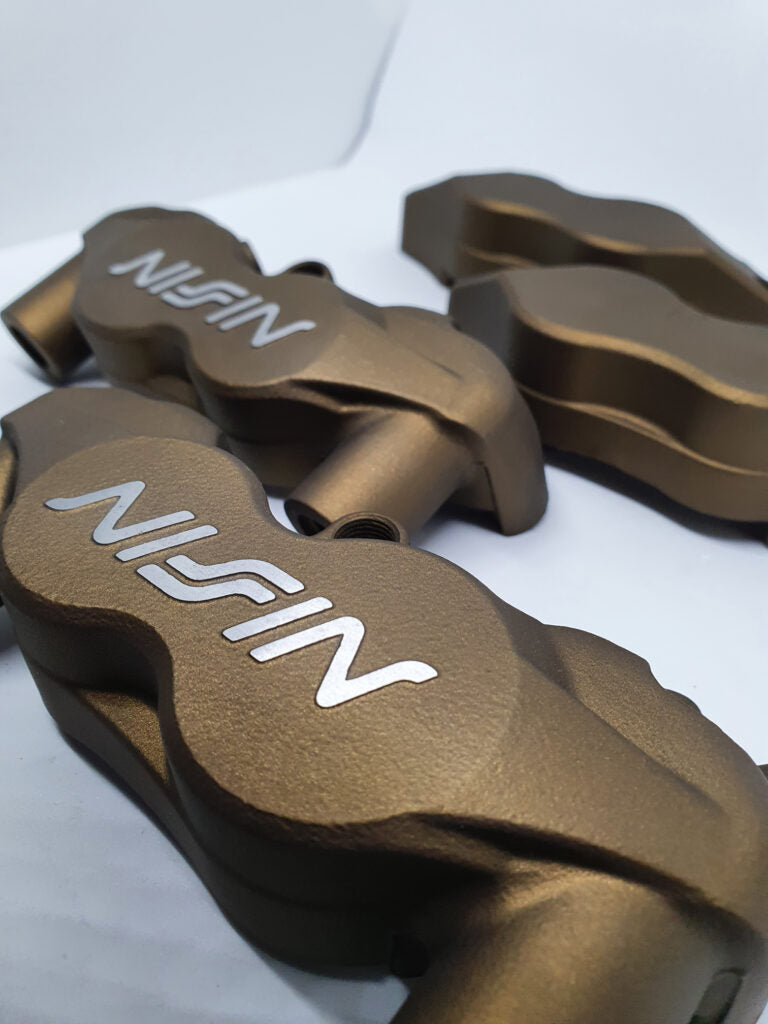
Cerakoting UK: Professional Ceramic Coating Services for Automotive Parts
Share
Introduction to Cerakote Coatings

Cerakote represents a breakthrough in ceramic-polymer coating technology that's revolutionizing how we protect and customize automotive and motorcycle components.
Unlike traditional paint or powder coating, cerakote coatings bond at the molecular level to create an incredibly durable surface that resists heat, chemicals, and abrasion far better than conventional finishes.
At Brightstone Engineering, we've embraced this Cerakoting UK technology to offer our customers protection that goes way beyond what standard coatings can deliver.
The popularity of cerakote has exploded across the UK automotive scene, and for good reason. These ceramic-based coatings can handle temperatures up to 1800°F, resist salt corrosion from winter roads, and maintain their appearance after years of abuse.
Originally developed for aerospace and firearms applications, Cerakote applications have expanded into virtually every industry where durability matters. For car and motorcycle enthusiasts, this means engine components, exhaust parts, suspension pieces, and custom trim can all benefit from protection that actually improves with heat cycling.
The technology keeps advancing too - modern cerakote products offer over 100 color options while delivering performance that makes traditional paint look primitive by comparison.
Types of Cerakote Products Available

The cerakote product range offers solutions for virtually every automotive and motorcycle application you can imagine. H-Series cerakote coatings handle the extreme heat that exhaust components and engine parts generate, while C-Series products excel for suspension components and chassis parts that need impact resistance.
For custom work, the Elite Series delivers that show-quality finish that makes engine bays and motorcycle frames truly stand out. At our shop, we stock the most popular automotive cerakote formulations because different applications demand different properties - a brake caliper needs different protection than a decorative engine cover.
Selecting the right cerakote products depends entirely on what you're coating and how it'll be used. Gearbox components exposed to oil and heat need the chemical resistance of H-Series coatings, while visible parts like valve covers benefit from the color stability and gloss retention of Elite formulations.
We recently completed a Cerakote case study involving a motorcycle exhaust system where the customer wanted both heat resistance and a specific color match - the H-Series titanium finish delivered performance that conventional high-temp paint couldn't touch. These Cerakote technology innovations keep expanding what's possible, with new formulations appearing regularly that push the boundaries of temperature resistance, chemical compatibility, and color options. The key is matching the coating to your specific needs rather than just picking what looks good in the catalog.
How to Choose the Right Cerakote Service Provider

When searching for Cerakote providers, the most important factor isn't how long they've been in business - it's whether they understand your specific application and have the right equipment for quality work.
Proper surface preparation makes or breaks any cerakote job, so look for shops with blasting capabilities and clean, organized workspaces. At Brightstone Engineering, we invested in proper surface preparation equipment because shortcuts here ruin even the best Cerakote coatings.
Ask potential providers about their process, from initial cleaning through final cure temperatures, and be wary of anyone who can't explain why each step matters.
The biggest pitfall in choosing Cerakote services is focusing solely on price rather than quality and capability. Some providers treat cerakote like regular paint, rushing through preparation or skipping crucial steps that ensure proper adhesion. Look for shops that ask detailed questions about your application - will the part see high heat, chemical exposure, or heavy wear?
A good provider should recommend the right cerakote products for your specific needs rather than just offering whatever's cheapest. Portfolio examples matter too, but pay attention to the types of work they show. If you need automotive cerakote for engine components, examples of properly coated brake calipers or exhaust parts tell you more than pretty pictures of decorative items.
The best Cerakote providers combine technical knowledge with honest communication about what their services can deliver for your particular project.
Step-by-Step Guide to Applying Cerakote

Getting cerakote right isn't rocket science, but it's definitely not something you can rush through on a Sunday afternoon. The prep work makes or breaks everything - I've seen too many jobs fail because someone thought they could skip the proper cleaning.
We start every piece in our blasting cabinet, stripping away every trace of old paint, grease, and rust until we're looking at clean metal. You can't cheat this step. Try to spray cerakote over contaminated surfaces and you'll be redoing the whole job in six months when it starts peeling.
Temperature matters more than most people realize. The part needs to be bone dry and at room temperature before we even think about spraying. We use clean gloves from the moment it comes out of the blasting cabinet - fingerprints will show up as weak spots later.
The actual spraying takes practice to get right. Too thick and it runs, too thin and you get poor coverage. We spray multiple light coats, letting each one flash between applications. The curing process is where a lot of shops mess up - you need consistent temperature for the right amount of time.
Our oven holds exactly the temperature the specific cerakote products require. Rush the cure or get the temperature wrong and you've wasted all that prep work. After curing, the coating needs a few days to fully harden before you start beating on it. That's why we tell customers to take it easy for the first week - proper Cerakote maintenance starts with letting the coating do its thing without interference.
Cost Analysis of Cerakote Services in the UK

Cerakote costs UK vary wildly depending on who you ask and what you're getting coated. A simple brake caliper might run £80-120, while a complex motorcycle engine case could hit £200-300 or more.
The size really matters - we can handle parts up to 400mm square, which covers most automotive and motorcycle components people actually need done. But don't expect the same pricing as powder coating. Quality cerakote products cost more than regular paint, and the process takes longer when done properly.
What drives the price up isn't just the coating itself - it's everything that happens before we spray. Blasting, cleaning, masking complex parts, and multiple cure cycles all add time and cost.
A simple part with basic prep work costs less than something that needs intricate masking or special handling. We've had customers bring in parts that looked straightforward but needed hours of prep work to get right. Location affects pricing too - shops in London charge more than operations in smaller towns, but the quality can vary just as much. Smart money focuses on getting the job done right rather than hunting for the cheapest quote.
I've seen too many parts come back for rework because someone went with the low bidder who cut corners on prep work. For larger projects, batching multiple parts together usually saves money since we can spread the setup costs across several pieces. The key is planning ahead rather than rushing individual parts through as emergencies.
Industry-Specific Applications of Cerakote Coatings
The automotive world has embraced cerakote like nothing else in recent years. We've coated everything from brake calipers to exhaust manifolds, and the results speak for themselves. Engine bay components that used to look tired after a year now stay looking fresh after several seasons of hard use. Suspension components benefit enormously from cerakote's impact resistance - no more rusty shock towers or corroded control arms.
The heat resistance makes it perfect for exhaust work too. We recently finished a turbo housing that needed to handle extreme temperatures while looking good, and the H-Series coating delivered both performance and appearance that traditional paint never could.
Motorcycle applications push cerakote even harder than cars in many ways. Engine cases, exhaust systems, and frame components all see abuse that would destroy regular finishes. The chemical resistance helps when you're dealing with chain lube, brake fluid, and all the other substances that find their way onto bike parts. While firearms represent a huge market for cerakote applications, that's not something we handle at our shop - we focus on automotive and motorcycle work where we can deliver the expertise customers need.
The aerospace industry drove much of the original Cerakote technology innovations, but those applications require certifications and processes beyond what most small shops can offer. Consumer electronics and sporting goods use cerakote too, but again, automotive cerakote remains our specialty because that's where we can add the most value for our customers.
Frequently Asked Questions about Cerakote
"How long does cerakote last?" - that's the first question everyone asks. The honest answer is it depends on how you use it and what you're coating. Brake calipers that see road salt and heat cycles will show wear differently than decorative engine covers.
We've seen properly applied cerakote coatings last five years or more on daily drivers, while track cars might need refreshing sooner due to extreme conditions. The key is realistic expectations based on your actual use.
"Can you cerakote over existing paint?" - absolutely not, and anyone who tells you otherwise is setting you up for failure. Proper surface preparation means stripping everything down to bare metal in our blasting cabinet. We get this question a lot because people want to save money on prep work, but there's no shortcut that doesn't come back to bite you later. Another common one is about color matching - we can get pretty close to specific colors, but cerakote products have their own palette that doesn't always match automotive paint exactly.
For first-time users, my biggest advice is to start with something simple like brake calipers rather than complex engine components. You'll get a feel for how the coating performs without risking expensive parts. As for warranties, we stand behind our work but can't control how you use the parts afterward. Proper Cerakote maintenance involves basic care - avoid harsh chemicals and abrasive cleaners that can damage any coating, no matter how tough it claims to be.

